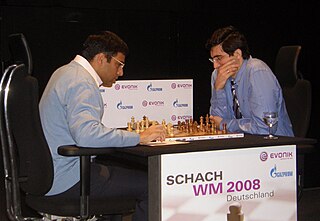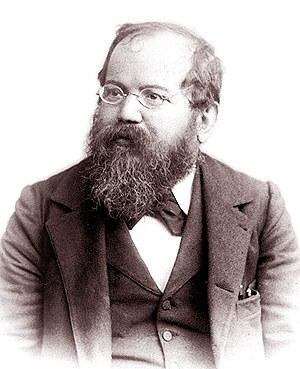In chess, scholar's mate is the checkmate achieved by the following moves, or similar:
The King's Gambit is a chess opening that begins with the moves:
The Modern Defense is a hypermodern chess opening in which Black allows White to occupy the center with pawns on d4 and e4, then proceeds to attack and undermine this "ideal" center without attempting to occupy it. The opening has been most notably used by British grandmasters Nigel Davies and Colin McNab.

Gioachino Greco, surnamed Cusentino and more frequently il Calabrese, was an Italian chess player and writer. He recorded some of the earliest chess games known in their entirety. His games, which never indicated players, were quite possibly constructs, but served as examples of brilliant combinations.

Boden's Mate is a checkmating pattern in chess characterized by bishops on two criss-crossing diagonals, with possible flight squares for the king being occupied by friendly pieces or under attack by enemy pieces. Most often the checkmated king has castled queenside, and is mated on c8 or c1. Many variants on the mate are seen, for example a king on e8 checkmated by bishops on g6 and a3, and a king on f1 checkmated by bishops on h3 and b6. Often the mate is immediately preceded by a sacrifice that opens up the diagonal on which the bishop delivers checkmate, and the mate is often a pure mate.
Bird's Opening is a chess opening characterised by the move:
Alekhine's Defence is a chess opening that begins with the moves:
The Caro–Kann Defence is a chess opening characterised by the moves:
The Blackmar–Diemer Gambit is a chess opening characterized by the moves:
Handicaps in chess are handicapping variants which enable a weaker player to have a chance of winning against a stronger one. There are a variety of such handicaps, such as material odds, extra moves, extra time on the chess clock, and special conditions. Various permutations of these, such as "pawn and two moves", are also possible.
The Queen's Knight Defense is a chess opening defined by the moves:
In a game of chess, the pawn structure is the configuration of pawns on the chessboard. Because pawns are the least mobile of the chess pieces, the pawn structure is relatively static and thus plays a large role in determining the strategic character of the position.

The World Chess Championship 2006 was a match between Classical World Chess Champion Vladimir Kramnik and FIDE World Chess Champion Veselin Topalov. The title of World Chess Champion had been split for 13 years. This match, played between September 23 and October 13, 2006, in Elista, Kalmykia, Russia, was to reunite the two World Chess Champion titles and produce an undisputed World Champion.
The English Defence is a chess opening characterised by the moves:

The World Chess Championship 2008 was a best-of-twelve-games match between the incumbent World Chess Champion, Viswanathan Anand, and the previous World Champion, Vladimir Kramnik. Kramnik had been granted a match after not winning the World Chess Championship 2007 tournament.

The World Chess Championship 1886 was the first official World Chess Championship match contested by Wilhelm Steinitz and Johannes Zukertort. The match took place in the United States from 11 January to 29 March, the first five games being played in New York City, the next four being played in St. Louis and the final eleven in New Orleans. The winner was the first player to achieve ten wins. Wilhelm Steinitz won the match 10–5, winning his tenth game in the twentieth game of the match. There were five draws.

The World Chess Championship 1889 was the second official World Chess Championship, and was between Wilhelm Steinitz and Mikhail Chigorin. It took place in Havana, Cuba. Steinitz defended his world title, and was the first of the two players to reach 10½. He won the match 10½-6½.

A World Chess Championship was played between challenger Max Euwe and title-holder Alexander Alekhine in various cities and towns in the Netherlands from 3 October to 16 December 1935. Euwe was the winner by overcoming a three-point deficit as late as the ninth game.
The Bishop's Gambit is a variation of the King's Gambit, a chess opening that begins with the moves:






